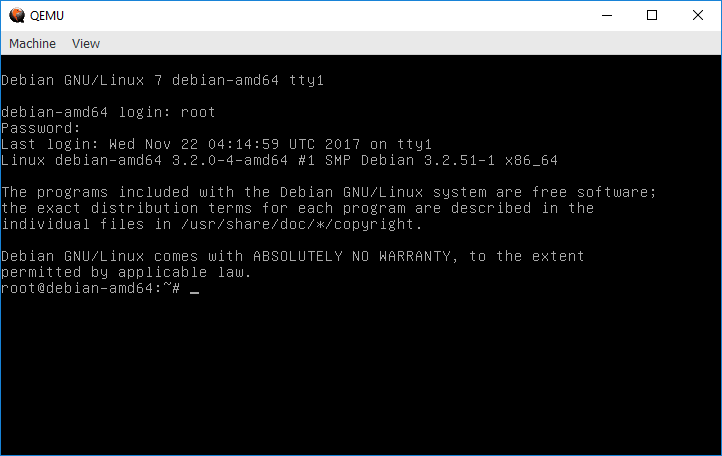

qemu-kvm – This is an open-source emulator that emulates the hardware resources of a computer.Let us examine what role each of these packages plays. Thereafter, install QEMU/KVM alongside other virtualization packages as follows: $ sudo apt install qemu-kvm virt-manager virtinst libvirt-clients bridge-utils libvirt-daemon-system -y Next up, update the package lists and repositories as follows. Step 2: Install QEMU/KVM on Ubuntu 20.04/22.04 Now that we have verified that our system supports KVM virtualization, let us proceed and install QEMU. If the kvm-ok utility is missing, install the cpu-checker package as follows. $ grep -E -color '(vmx|svm)' /proc/cpuinfoĮqually important, check if KVM virtualization is supported by running the following command: $ kvm-ok In our case, we are running Intel VT-x denoted by the vmx parameter. If Virtualization is supported, the output should be greater than 0, for example, 2,4,6, etc.Īlternatively, you can run the following grep command to display the type of processor your system supports. To verify this, run the following egrep command. Your system needs to have an Intel VT-x ( vmx) processor or AMD-V ( svm) processor.

To start off check if your CPU supports virtualization technology. Step 1: Check Virtualization Enabled in Ubuntu In this guide, we will demonstrate how to install QEMU/KVM on Ubuntu 20.04 / 22.04 distributions. It supports full virtualizations and works alongside KVM to provide a holistic virtualization experience. QEMU ( Quick Emulator) is a software module that emulates various components of computer hardware. It allows you to create and manage virtual machines running Windows, Linux, or UNIX variants such as FreeBSD, and OpenBSD.Īs mentioned earlier, each virtual machine has its own virtual resources such as storage, memory, CPU, network interfaces, USB interfaces, and video graphics to mention a few. KVM, short for Kernel-based Virtual Machine is an open-source type 1 hypervisor (bare metal hypervisor) that is integrated into the Linux kernel. In doing so, it allows you to create virtual computers also known as virtual machines off of the virtualized elements, and each virtual machine, also known as a guest, runs independently from the host system. The hypervisor creates an abstraction layer over computer hardware and virtualizes various components of the system including but not limited to memory, processor, storage, USB devices, etc. Virtualization is the abstraction of a computer’s hardware resources using a software application known as a hypervisor. Whether you are a seasoned IT expert, a programmer, or an IT novice, virtualization can be one of your greatest friends. Virtualization is one of the most widely used technologies both in enterprise and home environments.

Brief: In this guide, we explore how to install QEMU/KVM on Ubuntu in order to create virtual machines.


 0 kommentar(er)
0 kommentar(er)
